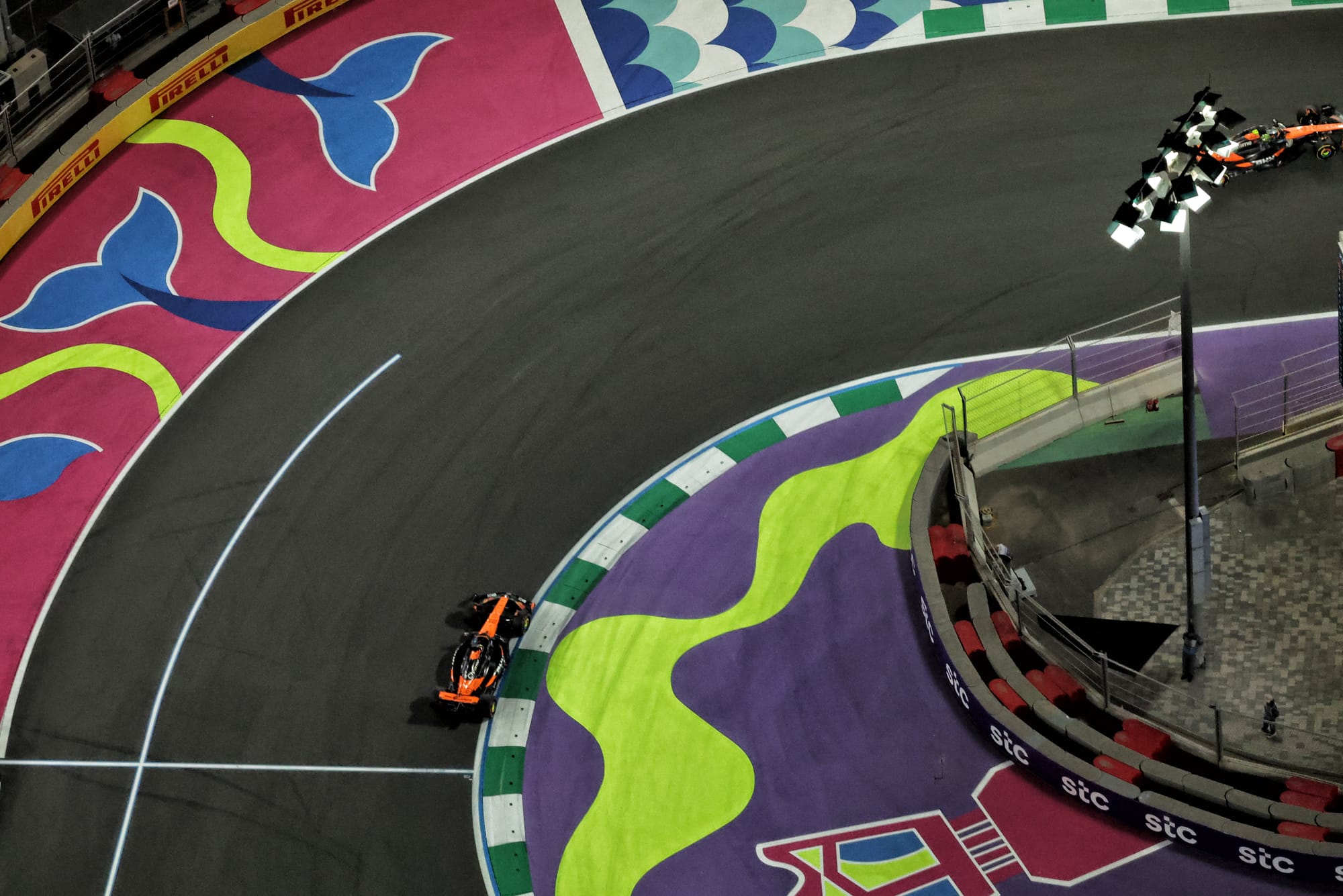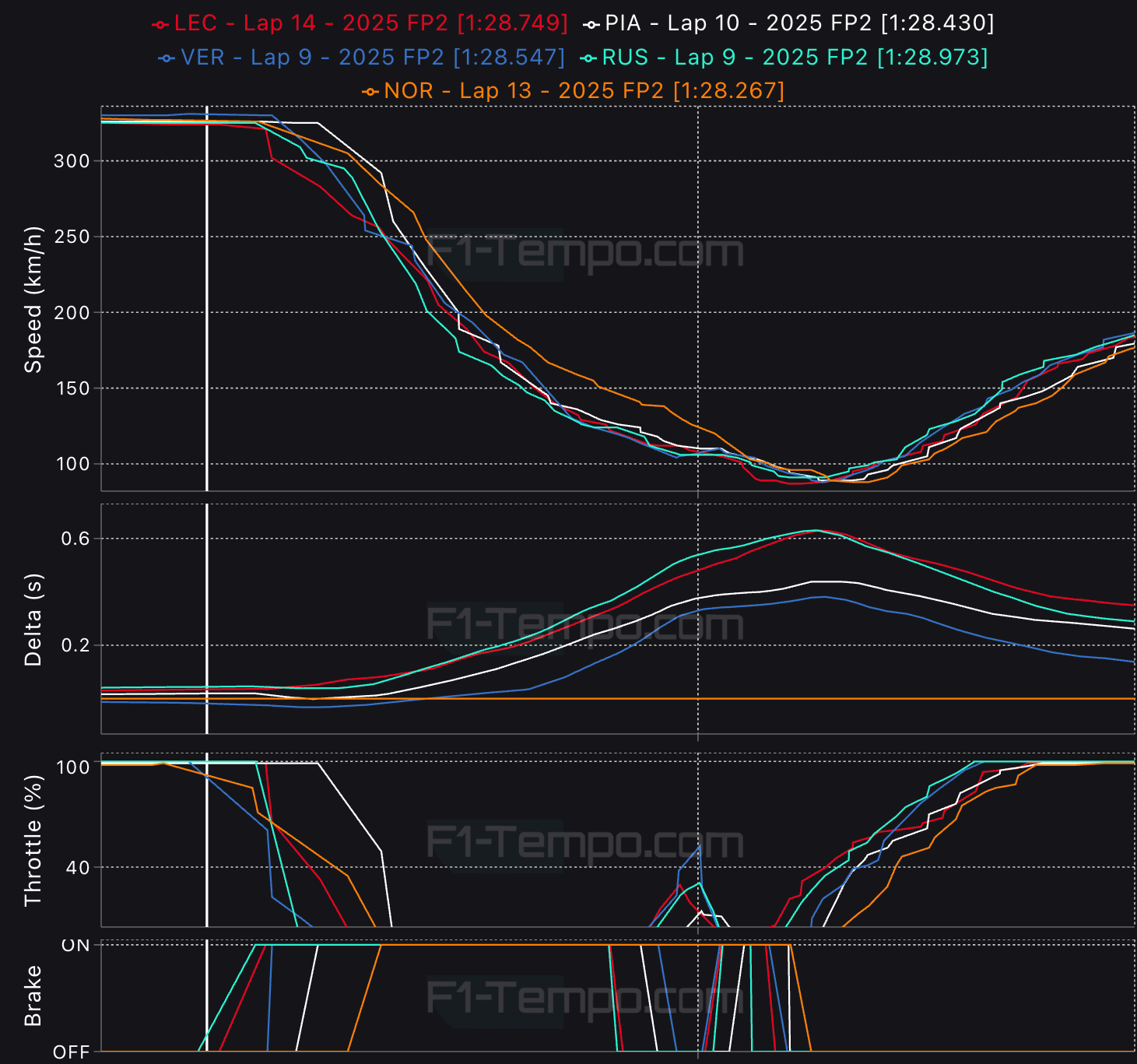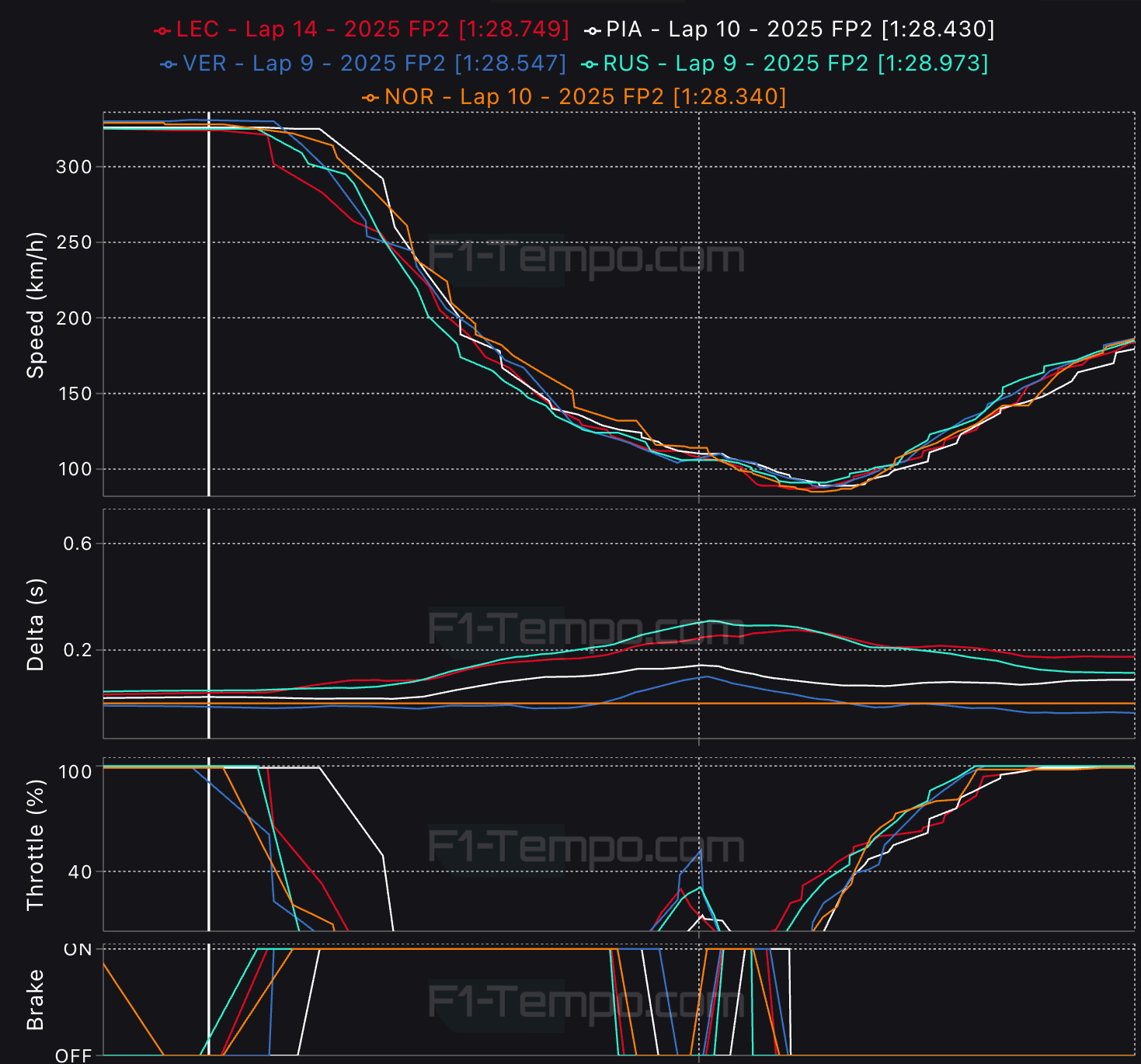The Lando Norris Corner Cup at Tours 1 and 2 made a slightly exaggerated image in the practice of the Saudi Grand Prix, but that helped highlight an intriguing McLaren style.
Norris settled twice fast enough to be the fastest in Jeddah FP2, with its 1m28,340 initials slightly improved at a 1m28,267 on a tower that started with Norris taking too much speed in the first turn, jumping the runoff and continuing with the Tour.
If this happened in qualifying, it would have been deleted – but this is not the case in practice, hence the tour being illegal (as it was against the rules) but valid.
Besides the fact that this has misunderstood a comparison of their “best” laps, which is more interesting, is how it helps to illustrate the way in which Norris and Oscar Piastri attack the first two corners that made an interesting comparison between the best teams and even the two drivers of McLaren.

It was noticeable to follow the track that they took more input speed than their immediate rivals and to use the borders of the Apex at Tours 1 and 2.
On the average tire, it was more pronounced at turn 1, probably to help run the car with this additional speed. But because there was then more work to do to run the car in turn 2, the interior sidewalk was always constantly used aggressively on the softs.
Norris’ first round, and the best of Oscar Piastri, confirmed that they had a different approach from Max Verstappen, Charles Leclerc and George Russell – the fastest pilots of the other three teams.
The drivers of McLaren brake later and carried more speed in the apex of turn 1, sacrificing the output speed of the turn 2. This took place as a negligible loss of time for Verstappen, a slight global saving against Russell, and passing through both corners more than a tenth faster than the lecture.

The McLaren is lower at low speed, compared to its solid overall performance, and as an example, the boss of the Andrea Stella team had referred to the race on Friday that the car would have left a very different impression of looking at the Suzuka final chicane pathway compared to the first high -speed sector.
Thus, what was interesting in the approach of Jeddah is that he indicated that the drivers of McLaren used a slightly different approach to potentially attenuate this weakness. By making turn 1 slightly faster, even at the cost of a more embarrassing turn 2, they may have transformed two coat at slow speed in a slow speed and a half speed.
And, even if it is only FP2, the result was the nearby loss against Verstappen (which was much faster than the McLarens in the Suzuka chicane, to reuse this example) and a faster race than Russell and Leclerc.
In addition, and this is what the illegal Tour of Norris helped to highlight, Piastri seemed to adopt this approach further than Norris – who held back and raised earlier than his teammate during his first round of push.

When Norris cut the corner, it was after braking a few meters later than before. Practice is the moment to experiment, so maybe Norris has seen this as a potential area of loss against Piastri, even if it had in fact been faster through the first sequence as a whole because its slightly more conservative entry reimbursed it from turn 2.
This could also be an example of the different driving styles of Norris and Piastri in the McLaren – Piastri stronger and later braking, trying to “V” Turn 1, where Norris is more conservative on the brakes and focuses more on the transport of angle speed in the classic style “ U ”.
Overall, Norris was faster in this section, even without its subsequent “illegal” “illegal” corner – therefore its natural style worked for him anyway – but we can see how he tries to continue an additional time in the braking zone to extend this gap.
It will be interesting to see how it continues on Saturday, in final training but especially in qualifications. This could be an area that McLaren seems relatively low and drivers work the hardest to mitigate – and it could also be a point of distinction between the pair.


